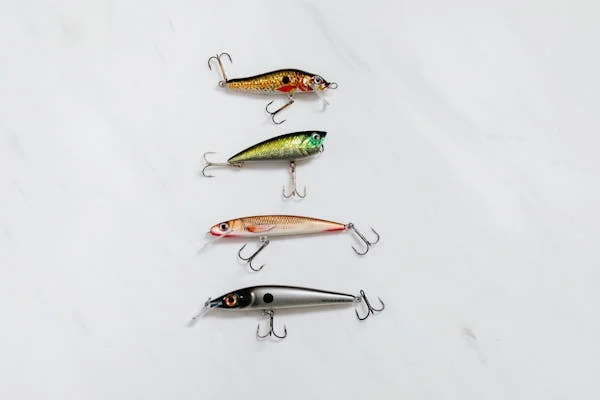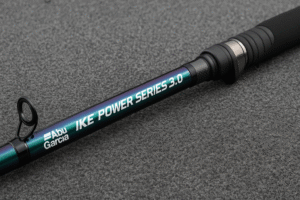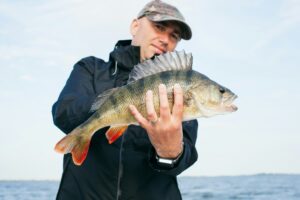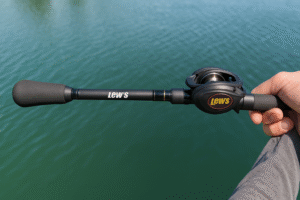Essential Northern Pike Fishing Tips for 2025
Northern pike, often called the “freshwater shark,” is one of the most exciting fish an angler can catch. With razor-sharp teeth, a powerful build, and an aggressive nature, the pike offers a thrilling fishing experience. These fish can grow to incredible sizes, making them a top target for many fishermen.
Hooking a big northern pike is like an adrenaline rush. At first, you might think you’ve snagged your line on a log, but then—boom!—the fight begins. If you’re ready to take on this powerful predator, here’s everything you need to know about gearing up, choosing the right lures, finding the best fishing spots, and making the perfect catch.
Essential Gear for Northern Pike Fishing
Rod Selection
While pike can grow very large, most fish you’ll catch range from 3 to 7 pounds. A 7-foot medium-action rod with a baitcasting or spinning reel is great for casting. If you’re trolling for bigger pike (15 to 30 pounds), a medium-heavy action rod is a better choice for handling the extra weight.
Choosing the Right Reel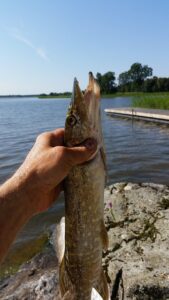
A strong reel is crucial when fishing for pike. If you’re casting, use a reel with at least 15 pounds of drag. This will help you control and land most fish you encounter. For trolling, opt for a reel with 25 pounds of drag. This setup allows you to use larger lures and handle the extra resistance created by the water.
Some anglers also use line counter reels while trolling. These reels help measure how far back your bait is, allowing for precise placement and increasing your chances of success.
Fishing Line and Leaders
Pike have sharp teeth that can easily cut through standard fishing lines. That’s why a strong braided line is recommended.
For reels with a 15-pound drag, use a 15-20 pound braided line.
For reels with a 25-pound drag, go for a 30-40 pound braided line.
Attach a 3-4 foot fluorocarbon leader (20-40 pounds) to your main line to prevent pike from biting through it.
Some anglers add a wire leader for extra protection, though it can slightly impact lure movement.
The Right Net
Bringing in a big pike is challenging, and the last thing you want is a net that’s too small. Choose a net between 20 and 36 inches, depending on your storage space and the size of fish you’re targeting. When in doubt, bigger is better!
Pliers for Hook Removal
Pike have strong jaws and sharp teeth, so removing a hook can be tricky. A good pair of long needle-nose pliers, a jaw spreader, and a fish lip gripper will make the process safer and easier. Always be careful when handling these fish, as their teeth and gill plates can cut like a knife.
Best Lures for Catching Northern Pike
Spoons
Spoons are a must-have for pike fishing. They mimic injured baitfish, which attracts hungry pike. When casting, let the spoon sink and flutter before retrieving. Stock up on spoons weighing 1/4 to 1 ounce in colors like silver, gold, and patterns that resemble local fish.
Soft Plastic Swim Baits
Soft plastic swim baits are excellent because they can be customized for any fishing environment. Choose sizes ranging from small minnows to larger stocker fish. Popular colors for pike include chartreuse, red, yellow, and white. Matching your bait to the fish in the lake can improve your chances of success.
Inline Spinners
Inline spinners work well because they create vibrations in the water, which pike can detect with their sensitive lateral lines. Choose darker colors for murky water and bright colors like chartreuse and white for clear water. These lures are especially effective in areas with submerged logs and undercut banks.
Finding the Best Fishing Spots for Northern Pike
Before casting your line, take some time to scout the water. Aerial maps, depth maps, and fish finders can help locate the best spots. Key areas to look for include:
Inlets and Bays – Pike often gather in shallow, marshy areas with plenty of weeds.
Drop-offs – These areas attract baitfish, making them prime spots for pike.
Shoreline Structures – Look for submerged logs and undercut banks where pike like to hide and ambush prey.
A simple rule to follow: Find the food, and you’ll find the fish.
Presenting Your Lure for Maximum Success
If fishing in weedy areas, use a weedless spoon or a soft plastic swim bait with a weed guard. Pike often sit motionless, blending in with their surroundings. Cast past the weed line and retrieve slowly to entice a bite.
For areas with submerged logs and undercut banks, inline spinners work well. Cast in a fan pattern to cover the area thoroughly. When fishing drop-offs, soft plastic swim baits can be very effective.
If you see a pike following your lure, do not stop reeling! Pike often lose interest if the lure suddenly stops moving. Keep a steady pace to increase your chances of a strike.
How to Set the Hook on a Northern Pike
When you feel a strong tug, set the hook with a firm upward motion. If the fish gets off quickly, don’t give up. Pike are known to strike multiple times, so keep retrieving in case they come back for another bite.
Landing a big northern pike takes preparation, patience, and the right gear. By choosing the correct rod, reel, and line, as well as using proven lures and fishing in the right locations, you can dramatically improve your chances of success.
Take the time to research your fishing spot and understand what local baitfish are present. Follow these tips, and you’ll not only catch more pike but also create unforgettable memories.
